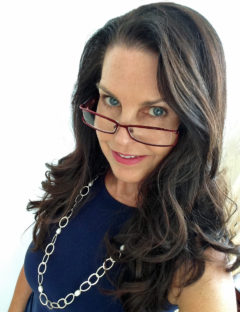 Fall 2015
Fall 2015
When Paul Gignac was a student, science came into his classroom via satellite broadcasts and JASON Learning. An enthusiasm for science, technology, engineering, and math (STEM) was fostered through role models in those fields, who reached out to kids in real time. It was interactive learning at its motivating best. In fact, Gignac applied and was selected in 1997 as a JASON Project Student Argonaut in a science immersion camp. He credits those life-changing experiences as the impetus to earn advanced degrees and become a crocodile and dinosaur paleontologist. Gignac teaches the next generation of doctors at the University of Oklahoma, performs research in the lab and field, and acts as a STEM role model with JASON. Other former JASON learners, geochemist Katie Inderbitzen and oceanographer and archeologist Mike Brennan, also reach out to future STEM career-minded students as JASON role models.
Science in Action
This collaborative education began with oceanographer Dr. Robert D. Ballard in 1989, as he discovered the shipwreck of RMS Titanic. With live feeds to classrooms, students shared in his adventure and sent letters asking how they could be involved in that kind of a job? He understood the wellspring of curiosity he had tapped and was determined to feed it. So began JASON Project, named for the mythical Greek explorer. It was the first distance learning. Yearly curricula grew to the full spectrum of science topics, ranging from Seas of Change about climate to Terminal Velocity about forces and motion to Tectonic Fury about geology. The program embeds vibrant professionals performing cutting-edge research, like regenerative medical research on a functional human heart, in classrooms through webcasts and events.
The idea is to make STEM learning accessible as a career and stimulate interest in pursuing them. As JASON Executive Vice President Patrick Shea says, “Up to 60-percent of new jobs in the future are STEM, and to be a good citizen, where life is increasingly interwoven with science and technology, people need an appreciation for the mindset. It is essential for a bright future.” Connecting kids with actual scientists and engineers is where the excitement is built to do the hard work to accomplish goals in those fields.
Literacy for STEM
Cy-Fair District Coordinator for 7th-12th Grade Science Debra Hill has seen the program bloom in the last two years with middle schoolers, and it will expand to high school in the near term. The original target audience of younger students creates a foundation to impact students for life. STEM careers are not just old men in white lab coats, working in isolation, Hill stressed. It is integrated and inspiring. She also understands the larger picture, saying, “The program develops literacy for collecting data, collaborating, and communicating ideas to stay in conversation about assessing information.”
Cy-Fair was thrilled to have Arnold Middle School science teacher Adam Schmidtendorff and Bleyl Middle School student Elaine Pham attend the JASON Argonaut Program at Cape Eleuthera Institute in the Bahamas this summer. Essays, passion and transformational possibilities earned them spots with the promise to make their enriching experiences come alive in their schools afterward.
Partnerships Investing in Students
As a non-profit, JASON has long-partnered with government, academia and industry. National Geographic plays a founding and key role. Chevron joined the ranks four years ago. “We were interested in a program that could be implemented for middle school students that was strategic, systemic, and sustainable,” says Chevron Houston Public Relations Manager Joni Baird. “Districts are reporting increased student achievement and engagement.” The company provides funding for 25,000 students plus teacher training on a local basis, attendance at the Jason Learning national conference, learning materials, opportunity for a teacher and student to attend an Argonaut expedition and support for the district coordinator meeting that are held monthly to share best practices.
The basis for JASON Learning is legacy of STEM accessibility and careers, and JASON role models who now contribute to that education is proof of its success. CFM
Learn more at jason.org
Gail G. Collins writes internationally for magazines and has co-written two books on expatriate life that contribute to children’s education.
Fast Facts:
- JASON Project was founded in 1989
- Has reached 10 million students and teachers
- Utilizes textbooks, digital labs, videos, online games
- Full-spectrum science curricula
- Role models embedded in cutting-edge careers
- Motivates with interactive programs, contests, citizen scientists
